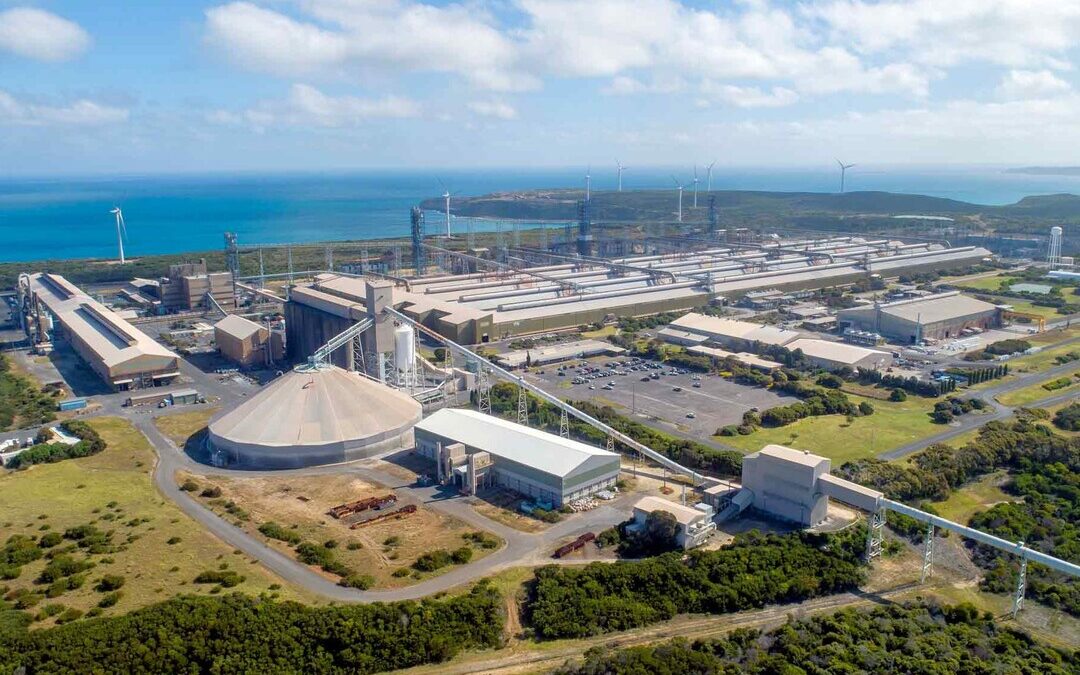Global aluminum Industry Faces Rising Demand as Decarbonization Efforts Lag
Global aluminum producers face rising demand and urgent decarbonization challenges amid policy shifts and regional disparities.
The global aluminum industry is on track for an 80 percent surge in demand by 2050 compared with 2020 levels, yet its pace of decarbonization remains far short of net-zero goals, according to a report released Friday by Alcoa and Eurasia Group
Aluminum currently accounts for about 3 percent of direct global industrial emissions. Producers have cut emissions intensity by roughly 2 percent annually over the past decade, but that falls short of the 4 percent yearly reduction needed to align with the International Energy Agency’s 2050 net-zero scenario.
Without breakthrough technology, the report cautioned, the sector risks plateauing in emissions cuts despite soaring demand.
Global Divergence in Decarbonization
Regional disparities highlight the uneven progress. Europe leads with its carbon pricing instruments, renewable integration and new policy tools such as the Emissions Trading System and the Clean Industrial Deal.
The region increased renewable electricity generation from 34 percent in 2019 to 47 percent in 2024, underscoring its policy momentum.
Brazil and other Latin American countries benefit from abundant hydropower, making them attractive for green aluminum exports. Brazil alone generates more than 90 percent of its electricity from renewables, positioning it as a competitive player ahead of the UN climate summit it will host in November.
By contrast, Asia’s two dominant producers, China and India, remain heavily dependent on coal. China, which produced nearly 60 percent of the world’s aluminum in 2024, is unlikely to see industry emissions peak before 2045, as many of its captive coal plants still have decades of operating life.
India lags further behind, with a fragmented approach to decarbonization and limited access to affordable renewables for industry.
The Gulf states are also seeking to reposition their aluminum sectors by leveraging sovereign wealth funds to finance gigawatt-scale solar projects and carbon capture systems. Still, reliance on fossil-heavy power grids limits the speed of transition.
Meanwhile, Guinea, the world’s second-largest bauxite producer, needs major investment in clean power to expand into refining and reduce its emissions footprint.
Policy Shifts and Trade Risks
The report emphasized that 2025 marks a decisive turn from policy design to implementation. Governments and companies are moving beyond roadmaps and climate pledges toward the delivery of real-world decarbonization projects.
The scrutiny of the aluminum value chain is intensifying from regulators, investors, and civil society, with calls for verified emissions reductions and increased supply chain transparency.
The European Union’s Carbon Border Adjustment Mechanism, which will impose tariffs on carbon-intensive imports starting in 2026, is expected to reshape trade flows.
It could favor low-emission producers in countries like Canada and Brazil while raising costs for exporters reliant on coal. However, the mechanism carries risks of unintended consequences.
One concern is the so-called “scrap loophole,” which assigns zero emissions to imported re-melted aluminum regardless of its origin or production method. That could disadvantage genuinely low-carbon producers while failing to reduce global emissions.
Other risks include the phasing out of compensation for indirect carbon costs in Europe, which may hurt efficient producers, and limited coverage of finished aluminum goods, which could allow carbon leakage.
The report also highlighted the rise of green protectionism, where trade and tariff policies are increasingly targeting emissions-intensive industries. The United States, which imports much of its aluminum, may face particular challenges as it seeks to expand domestic production without losing competitiveness.
Industry Momentum and Barriers
Despite the challenges, industry collaboration and commitments are increasing. The number of net-zero aligned aluminum projects announced in 2024 tripled compared with the previous year.
Initiatives such as the First Movers Coalition are driving buyers to commit to sourcing at least 10 percent of their aluminum from near-zero-emission processes by 2030.
Alcoa reported that 86 percent of its smelters are already powered by renewable energy, largely hydropower. That reliance underscores the importance of access to low-cost clean energy in making aluminum production competitive and sustainable.
Collaborative platforms, including the Mission Possible Partnership and the International Aluminium Institute, are encouraging companies to share risks and accelerate technology adoption.
The push reflects broad support among corporate leaders: A late-2024 survey of 1,500 executives across 15 countries found more than half plan to relocate operations in the next five years to secure better renewable energy access.
Yet barriers to scaling remain. In the U.S., permitting timelines for energy projects average 4.5 years and stretch to more than seven years for transmission lines.
In Europe, the slow national adoption of new permitting rules has stalled renewable development. Rising grid transmission costs now rival energy production expenses in some markets, adding to industry strain.
Path Forward for Low-Carbon Aluminum
The report recommended three key strategies for industry leaders to balance competitiveness with carbon reduction.
First, the sector should establish a clear global definition of low-carbon aluminum. A widely endorsed standard, possibly pegged at four tons of carbon dioxide equivalent per ton of aluminum produced, would allow for consistent labeling, transparent accounting, and broader market acceptance.
Second, the industry must deepen supply chain traceability using digital tools such as product passports. These solutions would help track emissions at every stage of production and provide greater transparency for regulators and buyers.
Finally, producers should seek opportunities in global policy fragmentation. Regions with renewable-heavy grids, such as Brazil and Canada, can achieve lower emissions at similar cost, while those reliant on fossil fuels face steeper abatement expenses.
Companies that adapt quickly to regional disparities will be better positioned to win contracts and capture emerging green premiums.
The study warned that treating competitiveness and decarbonization as separate priorities poses significant risks in a market shaped by shifting trade rules, energy costs, and stakeholder expectations. Instead, producers should pursue innovation, investment in cleaner power, and collaboration with policymakers.
“Public-private cooperation will be necessary to accelerate the adoption of transformative technologies,” the report concluded, highlighting advances in refining lower-quality bauxite and increasing scrap reuse as key opportunities.
Also Read:
Australia Pledges $1.24B to Support Green Aluminum Transition by 2036
Nirmal Menon
Related posts

Subscribe
Error: Contact form not found.


